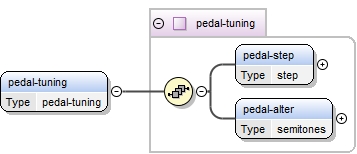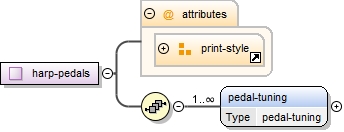| Namespace | No namespace | ||||
|
Diagram
|
 |
||||
| Type | pedal-tuning | ||||
|
Properties
|
|
||||
| Model | pedal-step , pedal-alter | ||||
| Children | pedal-alter, pedal-step | ||||
|
Instance
|
|
||||
|
Source
|
|
||||
| Schema location | file:/C:/Users/mihai/Desktop/MusicXML-Schema/musicxml.xsd |
